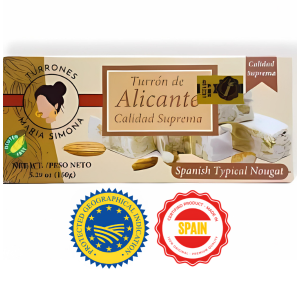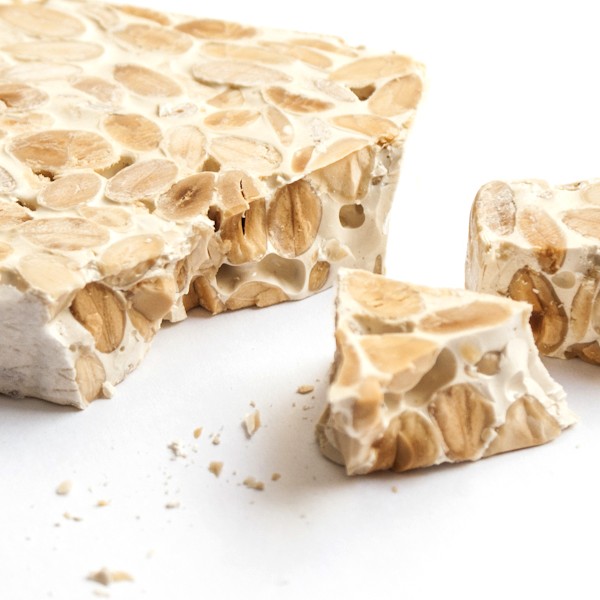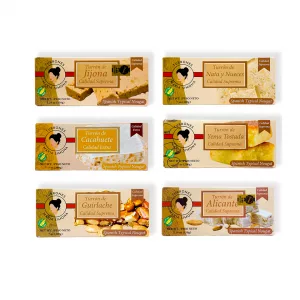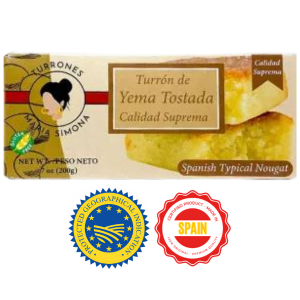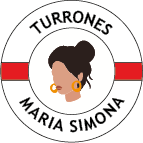Turron from Alicante
5,90€
The Alicante turron is known as hard turron because of its crunchy texture and the unique toasting of the almonds and the mixture of honey and egg whites. It’s a classic!
Maria Simona’s Alicante hard turron is made according to the traditional recipe.
We only use top quality Spanish ingredients.
Our turron has a designation of origin and is protected by the Regulatory Council of Jijona.
Availability: In stock
Maria Simona’s Alicante turrón is made according to the traditional recipe
- Net weight :150gr
- The Turron d’Alicante has a minimum shelf life of 6 months. Once opened, store in a cool, dry, dark place away from light and moisture, either in its original packaging or wrapped in aluminium foil or film, then in an airtight container. We often make the mistake of storing turron in the fridge, which only alters its organoleptic properties, flavour and texture.
- Ingredients: 60% roasted almonds, sugar, glucose syrup, 12% honey, wafer coating (potato starch and sunflower oil) and egg white. May contain traces of peanuts, sesame and hazelnuts.
This product does not contain gluten, so it is suitable for celiac people.
The Alicante hard Turron of Maria Simona has a designation of origin and is protected by the Regulatory Council of Jijona.
The history of Alicante Turron
Although no-one can deny the close link between the city of Alicante and this sweet. It is not known exactly when and how the “original” turron came into being. Almonds and honey were already a common food in Greece and Rome, to give energy to Olympic athletes. The Spanish Turron also presents some similarities with the Arabic baklava. It is widely believed that the recipe originated in Arab countries, but there is no proof of this.
In any case, this candy holds significant importance for the community:
– Firstly, it is known that as early as 1582, turrón already played a significant role in the Christmas culture of Alicante. A municipal document from the time notes that workers were given Spanish nougat as part of their salary during the Christmas season.
Furthermore, in Lope de Rueda’s 1570 play ‘La Generosa Paliza’, the turrón central to the plot is referred to as ‘turrón d’Alicante’.
– Lastly, the passion for Spanish nougat in the town was so intense by 1595 that King Philip II found it necessary to write a letter urging the town to curb its expenditure on turrón and fig bread.
Although the city eventually stopped producing Spanish nougat due to a commercial dispute, its name remains a point of reference, associated with the hard variant of this sweet.
To find out more, click here:
Find all our preparation tips on Maria Simona’s website.
Don’t hesitate to visit our blog to discover our delicious recipes.
| Weight | 0,30 kg |
|---|---|
| Nutritional information | Per 100g |
| Energy | 2269KJ / 544kcal |
| Fats and oils | 34g |
| of which saturated fats | 2,9g |
| Glucides | 43g |
| of which sugars | 38g |
| Proteins | 14g |
| Salt | 0,12g |
| Fibers | 5,2g |
Related products
-
Packs
Family Pack (12+2)
58,90€ – 78,00€ This product has multiple variants. The options may be chosen on the product page

